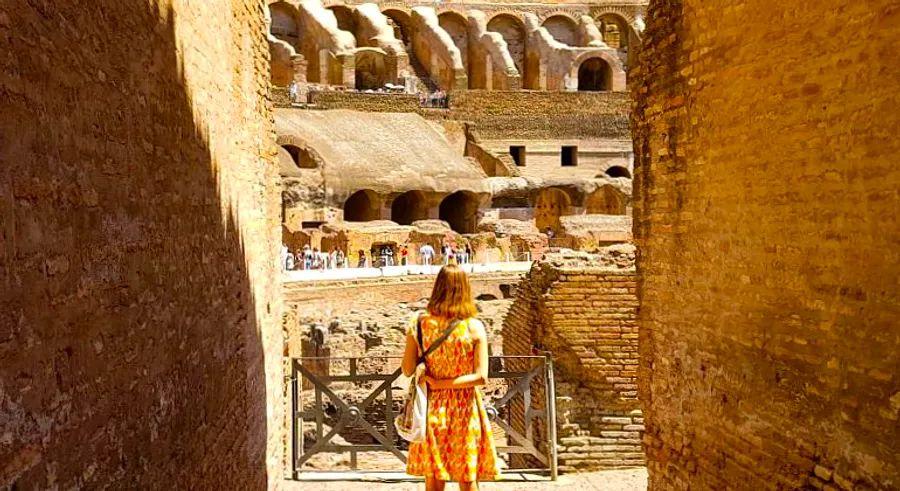The New Seven Wonders of the World: Discover our most awe-inspiring achievements

For centuries (we're talking thousands of years), the Seven Wonders of the World were the ultimate symbols of human ingenuity.
But the modern traveler has a challenge to contend with.
Apart from the timeless Great Pyramids of Egypt, the rest have faded into the annals of history.
Dreaming of seeing the Hanging Gardens of Babylon or the Colossus of Rhodes? Sadly, those wonders are lost to time. The closest you’ll get is a book or online image.
The answer? In 2007, a worldwide competition took place, garnering over 100 million votes for the New Seven Wonders of the World.
And even though many of these wonders are ancient, they remain standing! These are enduring destinations where we can visit and capture memories with a selfie.
Explore these seven incredible landmarks, and you’ll cross off four continents from your travel bucket list. Let’s dive in:
Chichen Itza (Mexico)
A UNESCO World Heritage Site, Chichen Itza stands as the most iconic remnant of the powerful Mayan civilization. Historians believe it became a major economic and cultural hub around 600 AD, thriving for several centuries.
Eventually, it was abandoned and reclaimed by nature in the Yucatán Peninsula of modern Mexico. The ruins remained hidden until 1841, and it has only become a major tourist spot in the last few decades.
The El Castillo pyramid (“The Castle”) is likely the most iconic structure of the once expansive city.
Best time to visit: Arrive early in the morning before the heat sets in and the cruise ship crowds from Cancun show up. Many also visit during the spring and fall equinoxes to witness an incredible shadow display – but be prepared for large crowds.
Christ the Redeemer (Brazil)

The youngest among these wonders, the Christ the Redeemer statue was completed in 1931 and has swiftly earned its place among the great historical landmarks. Standing 30 meters (98 feet) tall with arms extending 28 meters (92 feet), this simple yet captivating white Art Deco statue offers an awe-inspiring view over Rio de Janeiro.
It is one of the most spectacular combinations of natural and man-made beauty anywhere in the world.
Best time to visit: Rio is generally drier (ideal for those stunning views) but also hotter between December and February. Expect larger crowds in the afternoon, with mornings being better for capturing the statue and afternoons for the city’s sweeping vistas. Weekends and Carnival season will bring even more visitors.
Colosseum (Italy)
The Romans sure knew how to entertain – gladiator battles, man vs. beast contests, chariot races, and even simulated naval clashes. No matter how you feel about their choices, they sure built a Colosseum to endure.
Emperor Vespasian ordered its construction around 71 AD, and it was inaugurated in 80 AD during the reign of his son Titus. The Colosseum could hold up to 50,000 spectators and featured a retractable awning to protect Romans from the sun.
Considering how quickly stadiums rise and fall in the modern world, this feat of engineering is all the more impressive. This iconic structure stands proudly amidst the hustle and bustle of contemporary Rome.
Best time to visit: Fewer tourists flock to the Colosseum during Rome’s off-season (winter), weekdays, or during the opening hour (8:30 a.m.) and near closing time (hours vary). If you visit in the summer at midday, be prepared for the heat!
Great Wall (China)
Construction of the Great Wall began around 220 BC and spanned several centuries. Its goal was clear: to keep nomadic tribes from the north out of China. Despite its massive length, it couldn't stop the Mongols, who eventually invaded in the 13th century and established their rule in what is now Beijing under Kublai Khan.
In recent decades, however, the Great Wall has proven to be a fantastic way to draw in an influx of tourists (and their wallets) into China.
Stretching for 8,852 kilometers (5,500 miles), the Great Wall’s most well-preserved section lies within the Ming Dynasty portion. Its immense travel appeal is undeniable. According to UNESCO, it’s 'an exceptional example of the military architecture, technology, and artistry of ancient China.'
Best time to visit: Aim for a spring or fall trip when the weather is more pleasant and crowds are thinner. Summer tends to be hot and crowded, while winter can be incredibly cold in northern China.
Machu Picchu (Peru)
Machu Picchu is the most remote and difficult-to-reach of the New Seven Wonders of the World (among other challenges, you’ll need to acclimate to the high altitudes of the Peruvian Andes).
But the rewards are extraordinary: a stunning example of Incan architecture set against a breathtaking backdrop of tropical mountain forests. The site features around 200 structures within this religious and agricultural hub, perched on a steep ridge and interwoven with stone terraces.
Remarkably, it was only in active use for a brief period in history. The Inca constructed it in the 15th century, but it was abandoned after the Spanish invasion in the 16th century.
Best time to visit: The dry season, from April to October (though Andean weather can be unpredictable). The peak tourist months are June through August. Due to the delicate nature of the site, new ticketing policies limit visitor numbers at any given time – so you must reserve a morning or afternoon slot.
Petra (Jordan)

Located in modern-day Jordan’s southwestern desert region, nestled between the Dead Sea and the Red Sea, Petra has been inhabited since prehistoric times.
Though many recognize it from the 1989 film 'Indiana Jones and the Last Crusade,' in its prime during the classical eras of Greece and Rome, Petra was a key stop for caravans traveling between the Mediterranean and the Far East. By the 7th century AD, it was abandoned, yet its remote desert location helped preserve much of it over the centuries.
It’s no surprise that Petra continues to captivate visitors today – its blend of Eastern and Hellenistic architectural styles, partly built and partly carved into the area's distinctive red sandstone, makes it truly one-of-a-kind.
Best time to visit: Jordan can be extremely hot during summer, and winters can be unexpectedly chilly. For the best weather, plan your visit during the spring or fall.
Taj Mahal (India)

Did you know that the world-renowned Taj Mahal is actually a stunningly intricate tomb and stands as a timeless symbol of love?
In 1632, Mughal Emperor Shah Jahan commissioned the construction of the Taj Mahal as a tribute to his beloved wife, Mumtaz Mahal. This architectural masterpiece, renowned for its beauty and considered the pinnacle of Indo-Islamic design, was finished in 1648.
The Taj Mahal, made of pristine white marble, is located in Agra, approximately 212 kilometers (132 miles) south of India's capital, New Delhi.
Best time to visit: The late spring and early summer months in this region of India can be intensely hot, though the crowds are thinner. The monsoon season follows. The most pleasant weather is typically from November to February, and early mornings offer particularly stunning sunrises.

1

2

3

4

5
Evaluation :
5/5